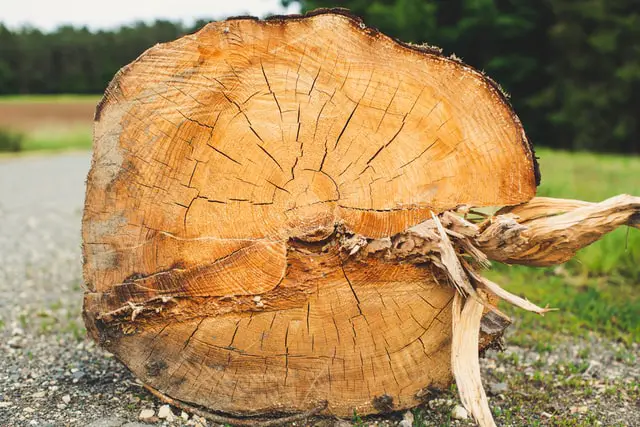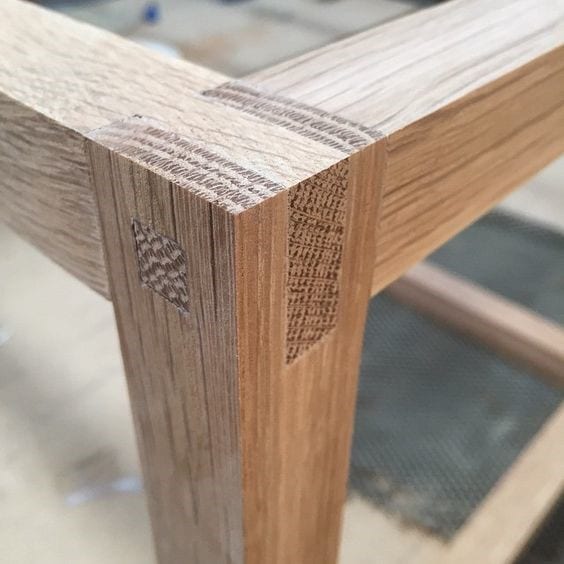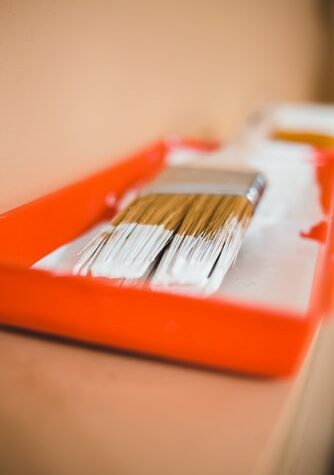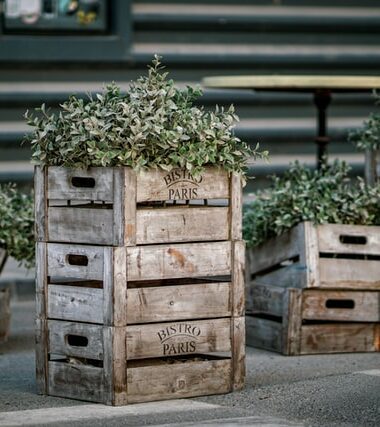Green wood is a term used to describe freshly cut wood. The high moisture content in green wood makes it vulnerable to splitting and cracking. This is because when moisture naturally dries from wood, it dries out unevenly. As a result, some wood fibers shrink from dryness while the moist fibers retain their size. This creates tension within the wood which can make it prone to cracking and splitting.
If you want to know how to keep green wood from splitting, this article is for you.
Instructions On How To Keep Green Wood From Splitting
To protect your wood or log there are few techniques you can use. To find out how to keep green wood from splitting, please read the steps below –
Technique 1: Seal the Deal

Sealants protect wood by preventing shrinkage or drying caused by contact with the air in the environment. Market brand sealants like Anchorseal offer a great solution to the green wood splitting and cracking problem.
Apart from commercial products, you may also opt for alternatives like Linseed oil. Or, if you want to really experiment, try some of the DIY (Do it yourself) techniques which involve the use of oils, wax, paint and other materials. All these methods can effectively reduce the rate of drying – which is the primary cause of splitting and cracking in green wood.
Read the methods below to learn how to keep green wood from splitting, by using sealants –
Sealing with Anchorseal

A good product in the market, to seal your green wood, is Anchorseal. It is applied on the exposed area of green wood, therefore preventing it from cracking and splitting. Within the Anchorseal brand, there are variants which specialize in sealing different types of wood. Veneer logs, Turning blanks, hardwood lumber, Log cookies and softwood logs are some of the materials on which Anchorseal can be used.
Steps to Apply Anchorseal
1. Select the Correct Anchorseal Variant

The type of wood you possess determines which Anchorseal variant you should buy. You should also calculate the amount of sealant you would require beforehand. Here is an estimate to help you decide the quantity – a gallon of sealant can cover an area of 100 to 200 square feet (ca. 19 square meters).
2. Prepare the Wood

Before applying the sealant you need to prepare the wood. Preparation involves cleaning the wood surface by removing all dust and tiny particles. Ensure that the wood is dry. This is especially important for the exposed areas where the sealant will be applied.
3. Put the Sealant

For application of the sealant over the exposed wood areas, use a sprayer or a brush. Here is a tip – if you choose a sprayer to apply the sealant, make sure that its tip is 0.55mm or 0.21 inches or wider. This will make your job easier and faster. Keep applying the sealant over the exposed areas of wood, till the sealant starts dripping a little. If the sealant is not dripping it means you have not used enough to seal the wood.
4. Allow the Wood to Dry

After applying the seal, keep the wood under a shade and allow it to dry naturally. You should not expose the freshly sealed wood to the sun. Put it in a shed or inside a shelf (if it is a small sheet or log of wood). To easily monitor the progress of the drying process, place the sealed wood in an elevated position. Another important factor to take in is the time when you should apply the seal. The best time to seal green wood is when it has just been freshly cut.
Sealing with Linseed Oil

- Before applying Linseed oil, you need to clean the wood surface by sanding it and removing all dust particles from the exposed areas.
- An important thing to remember is to sand in the direction of the wood fibers.
- The application of Linseed oil will also depend on the form of green wood. If you have green wood in the form of a board then you must sand the whole surface. If you have a wooden log then cleaning only the open areas would be enough.
- Now that your wood has been sanded and dusted, boil some Linseed oil.
- Pour the boiling oil over the exposed areas on the wood.
- Leave the wood out to dry in the open air. Keep it away from sunlight. Direct sun can damage the coat of Linseed oil.
Sealing with Wax (Paintable)

- First, you need to mix up your DIY sealant. For this you will need paint thinner, candles, canning jar and measuring scale.
- Break all the wax from the candles into pieces and weigh them on the scale. Then, preheat a saucepan and put the wax pieces in it. Keep cooking till the wax melts completely.
- Take the canning jar and pour paint thinner into it. The amount of thinner required is a quarter of the weight of the wax.
- Now pour the melted wax into the canning jar while mixing continuously. Keep the jar away from fire and hot surfaces.
- Using a brush, apply a thin coat of this mixture over your green wood and cover all the required areas. Allow the mixture to dry naturally.
- It is important to note that DIY methods can seal green wood from splitting for a few months only. For longer protection you should opt for commercial sealants.
Technique 2: Storing the Wood

While contemplating how to keep green wood from splitting, you should also consider storing them. Follow the instructions below to get started –
- Store green wood in the form of boards as they are more immune to splitting and cracking.
- Prevent the growth of mold and fungus by pacing the board away from the ground.
- Ensure that there is ventilation from all sides to prevent uneven drying.
- To promote even drying, you can place weights over the wood stack.
Technique 3: Dry the Wood

By drying wood in a controlled and even manner, you can greatly reduce the risk of splitting. But drying is a long process and it can take months or even years for wood to dry completely. If you are wondering how to keep green wood from splitting by drying the wood, consider air drying. By controlling the process you can evenly air dry green wood and prevent it from splitting and cracking.







